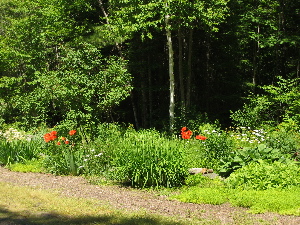NOXIOUS WEEDS BEING SPREAD BY BIRD SEED???
Check this article I just read in the National Gardening Association's newsletter.
"Bird Feeders Spread Noxious Weeds

Bird feeding is a popular fall activity. People love to watch the birds gathering at the feeder; plus, feeding helps birds survive the winter. However, anyone who has watched birds at a feeder knows they can be messy eaters. Much of the bird seed drops to the ground under the feeder. If the birds aren’t dropping seeds, sometimes it’s the squirrels invading the feeder. In either case, the seed that drops often germinates. While we’d like to think all the seed in your bird feed bag is pure, research conducted at Oregon State University found the seed from 10 common brands of bird feed contained more than 50 noxious weed seeds as well. In a study, they found that 30 weed species, such as bindweed, velvetleaf, and ragweed , sprouted under bird feeders. These weeds can then spread to nearby fields and gardens.
You can’t teach birds to be better eaters, but there are ways to prevent these weeds from getting started. Researchers suggest using a tray under your feeder to keep seeds off the ground and selecting bird foods that won’t sprout, such as sunflower hearts, peanut butter, raisins, mealworms, and plain suet cakes. Some seed manufacturers are now baking seeds before selling them to kill weed seeds. Look for baked wild bird seeds at your garden center.
For more information on preventing weeds from spreading from your bird feeder, go to: Weed Science Society of America"




